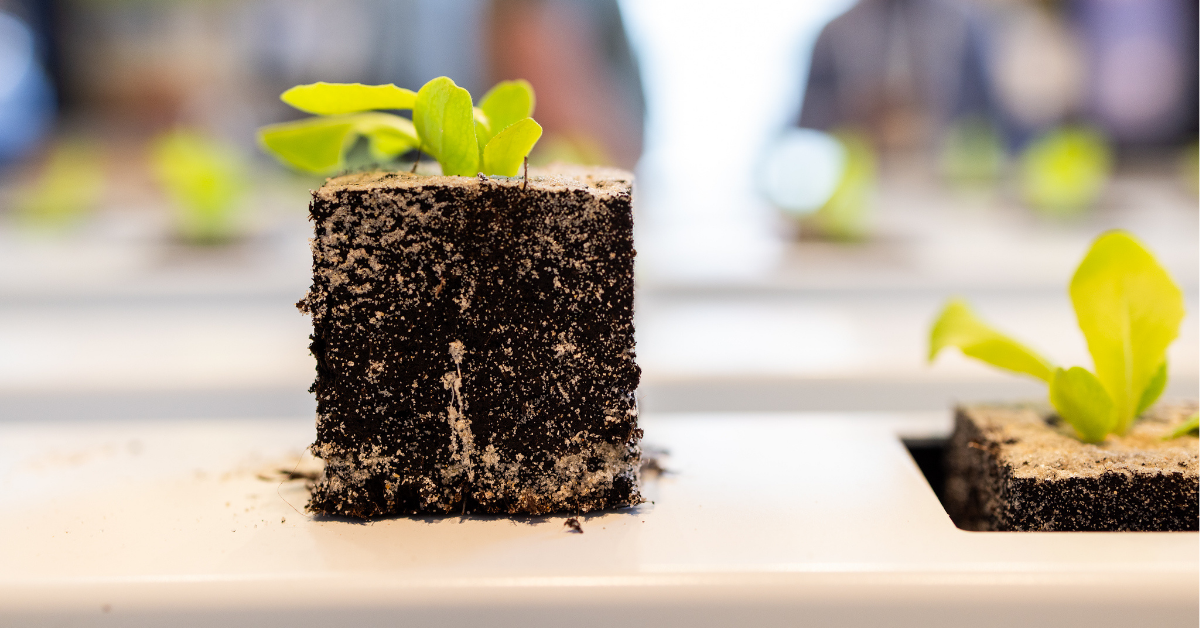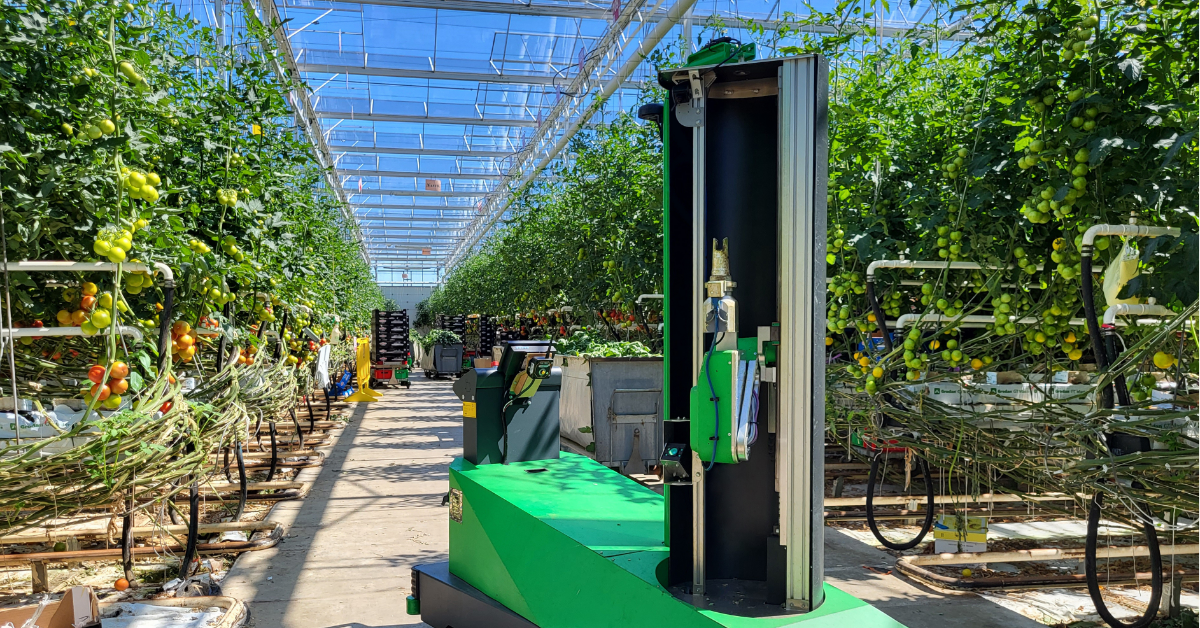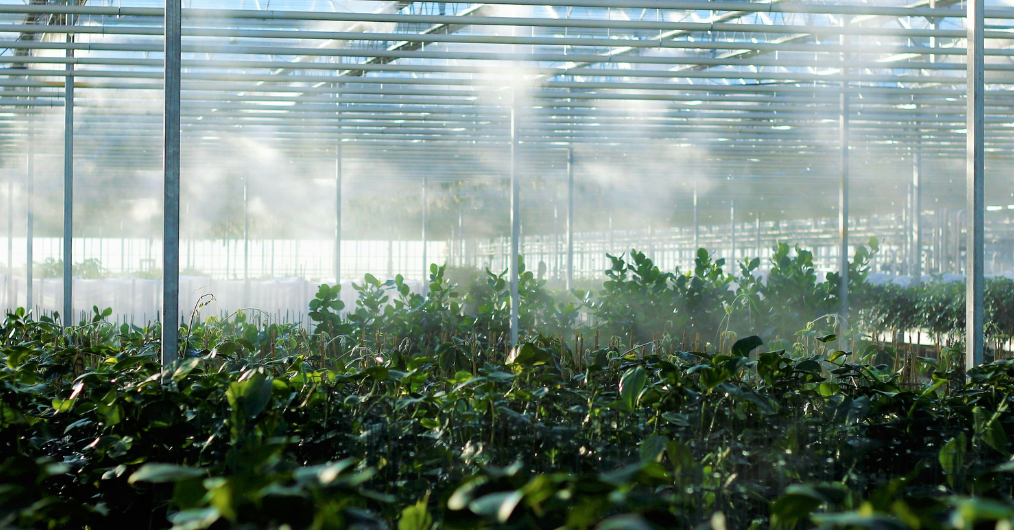‘Reliability, scalability, and local support in post-harvest’
Author: Jacco Strating
Tuesday, 25 November 2025
'Passion' embodies our unlimited commitment to crops, people, and technology, driving innovation across the horticulture sector. Building on the enduring importance of personal touch, GreenTech is excited to strengthen connections and unveil new initiatives designed to inspire growth and collaboration within the industry. In a series of articles, the passion within horticulture worldwide will be highlighted from different angles. This article explores the passion for automation and the growing demand for post-harvest solutions in North American horticulture.
As the availability of sufficient workers becomes increasingly challenging, more growers in North America are seeking automated solutions, says Albert Pinto, Vice President of Sales at Foray Enterprises Inc. But flexibility is another reason. “We’re seeing a strong movement toward automation that enhances flexibility rather than rigidity. Growers and packers want systems that can handle variable volumes, multiple packaging formats, and evolving retail demands without requiring a full redesign each season. There’s also a clear focus on labour reduction and traceability, with automation bridging the gap as labour becomes harder to find and more costly. Data integration and equipment connectivity or Overall Equipment Effectiveness (OEE) — the ability to monitor, report, and optimize — are also rapidly gaining ground in the North American market.”
Pinto has been involved in the Controlled Environment Agriculture (CEA) and post-harvest automation industry for well over a decade. For the past six years he is leading the North American operations under Viscon Group NA Ltd. before launching a new brand, Foray Enterprises Inc. “My background combines design, sales, systems integration, and hands-on project management — helping growers and packhouses transition from traditional methods to fully automated, data-driven solutions.” Foray Enterprises Inc. is based in Leamington, Ontario, at the heart of North America’s greenhouse industry. The company is specialised in high-tech automation and robotics for post-harvest and processing applications. From conceptual design and engineering to turnkey installation and after-sales service. “Our brand was born out of Viscon Group NA Ltd, conceived to offer more flexible, customer-driven solutions that reflect the realities of the North American market. Although Foray in name is new, our experience and knowledge base are unmatched in the industry. Our team has supplied and supported automation projects for some of the largest Controlled Environment Agriculture (CEA) companies in North America, giving us a deep understanding of both large-scale commercial operations and emerging producers.”
Across the industry, Pinto sees convergence between mechanical automation and digital intelligence. Equipment that used to operate in isolation is now part of a connected ecosystem — sharing data and adapting automatically to production needs.
“We’re aligning with this shift by developing smarter, modular systems that can evolve alongside a customer’s operation. We’re also expanding our service and support infrastructure to ensure uptime and rapid response — which we see as equally critical to technology adoption.”
For the next years Pinto expects his and other companies to anticipate continued growth in smart, modular, and scalable automation. “Rather than large, fixed systems, the demand is shifting toward plug-and-play equipment that can be deployed incrementally as operations expand. We also expect greater integration with data and AI — allowing systems to self-adjust based on crop quality, retailer demand, or even logistics data. Sustainability will also shape innovation, with energy-efficient designs and recyclable materials becoming industry standards.”
As the availability of sufficient workers becomes increasingly challenging, more growers in North America are seeking automated solutions, says Albert Pinto, Vice President of Sales at Foray Enterprises Inc. But flexibility is another reason. “We’re seeing a strong movement toward automation that enhances flexibility rather than rigidity. Growers and packers want systems that can handle variable volumes, multiple packaging formats, and evolving retail demands without requiring a full redesign each season. There’s also a clear focus on labour reduction and traceability, with automation bridging the gap as labour becomes harder to find and more costly. Data integration and equipment connectivity or Overall Equipment Effectiveness (OEE) — the ability to monitor, report, and optimize — are also rapidly gaining ground in the North American market.”
Pinto has been involved in the Controlled Environment Agriculture (CEA) and post-harvest automation industry for well over a decade. For the past six years he is leading the North American operations under Viscon Group NA Ltd. before launching a new brand, Foray Enterprises Inc. “My background combines design, sales, systems integration, and hands-on project management — helping growers and packhouses transition from traditional methods to fully automated, data-driven solutions.” Foray Enterprises Inc. is based in Leamington, Ontario, at the heart of North America’s greenhouse industry. The company is specialised in high-tech automation and robotics for post-harvest and processing applications. From conceptual design and engineering to turnkey installation and after-sales service. “Our brand was born out of Viscon Group NA Ltd, conceived to offer more flexible, customer-driven solutions that reflect the realities of the North American market. Although Foray in name is new, our experience and knowledge base are unmatched in the industry. Our team has supplied and supported automation projects for some of the largest Controlled Environment Agriculture (CEA) companies in North America, giving us a deep understanding of both large-scale commercial operations and emerging producers.”
Reliability, scalability, and local support
Pinto says North America is a market that demands reliability, scalability, and local support. “We understand that the North American horticultural landscape differs from Europe — it’s faster-moving, brand-driven, and shaped by changing consumer trends. We bridge that gap by combining proven global technology with localized innovation.” The company is currently working on several exciting developments in robotic handling, grading, and packaging for fresh produce. One highlight is a modular robotic case packing platform, designed specifically for North American growers who need adaptable, space-efficient and high-capacity automation that can handle frequent SKU and packaging changes. “Post-harvest technology covers everything that happens after the product leaves the greenhouse or field — including handling, sorting, packaging, labelling, palletizing, and internal logistics. This often means automated conveyor systems, robotics, weighing and inspection systems, and integrated controls that allow growers to track product quality and output in real time. The goal is to maximize product integrity, reduce waste, and ensure consistency and traceability before produce reaches the consumer.”Across the industry, Pinto sees convergence between mechanical automation and digital intelligence. Equipment that used to operate in isolation is now part of a connected ecosystem — sharing data and adapting automatically to production needs.
“We’re aligning with this shift by developing smarter, modular systems that can evolve alongside a customer’s operation. We’re also expanding our service and support infrastructure to ensure uptime and rapid response — which we see as equally critical to technology adoption.”
Accelerate practical innovation
Although innovation is strong, adoption is where the challenge lies. “Many growers and packers want to innovate but need solutions that fit their existing facilities, budgets, and workflows. Therefore, we must accelerate practical innovation by adapting technology to local realities rather than reinventing it from scratch.” The main drivers for the growing demand for post-harvest technology are labour availability and labour cost. “Reliable labour for repetitive post-harvest tasks is increasingly scarce across North America. At the same time, consumers and retailers expect consistent quality and sustainable practices. Automation helps solve both — ensuring quality, efficiency, and traceability while lowering operational costs. Growers also recognize that better post-harvest handling reduces waste and extends shelf life, directly improving profitability.”For the next years Pinto expects his and other companies to anticipate continued growth in smart, modular, and scalable automation. “Rather than large, fixed systems, the demand is shifting toward plug-and-play equipment that can be deployed incrementally as operations expand. We also expect greater integration with data and AI — allowing systems to self-adjust based on crop quality, retailer demand, or even logistics data. Sustainability will also shape innovation, with energy-efficient designs and recyclable materials becoming industry standards.”
GreenTech North America
Pinto looks forward to the first edition of GreenTech North America, on 23 and 24 September 2026. “We’re very positive about it. Having a GreenTech presence in North America reflects the region’s growing maturity and investment in controlled environment agriculture. It creates a valuable platform for North American growers, integrators, and innovators to connect directly with international technology partners — without the barriers of distance and time zones.” The event will also contribute to the demand for post-harvest technology and further development, Pinto thinks. “Absolutely. Trade fairs like GreenTech not only showcase new technology but also educate and inspire growers to take the next step toward automation. By facilitating real-world dialogue between growers and technology providers, these events accelerate adoption and drive innovation forward. We fully support these initiatives — they help connect the dots between innovation, investment, and implementation in a way that benefits the entire industry.”
Have exclusive horticulture technology news delivered to your inbox
The GreenTech monthly newsletter brings you the latest exclusive horticulture technology news and updates about our global horticulture technology trade shows and events.
Join over 32,000 of your peers and receive:
☑ Exclusive commentary from industry leaders
☑ The latest news from the GreenTech team
☑ Stay up to date with all the latest news about our events








